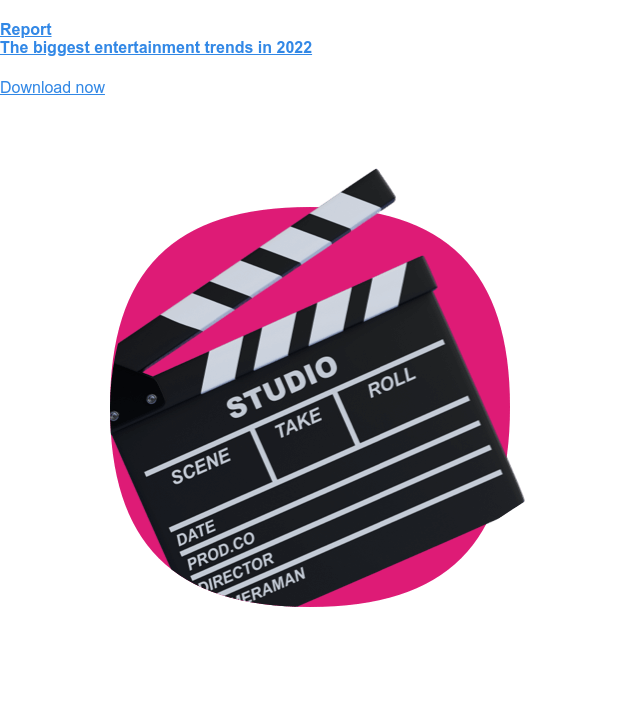In this series, Talk data to me, we chat to leaders from the world’s biggest brands and agencies about how they’re using insights to drive their business strategies.
We caught up with Hannah Richardson, group manager in ad research and insights at Snap Inc, to get her thoughts on the cookieless future, the mood of the moment, and data-led creativity.
What’s your favorite stat in the whole wide world?
So, I came across this stat recently – around 15% of Google searches have never been searched before. And I did check it, and it’s something that’s been released in increments over the last few years, including this year.
But I found it completely and utterly astonishing. When you think about how ubiquitous Google is in all of our lives when we’re searching for stuff, that stat really just shows the level of diversity in people.
Fun fact: 15% of all Google searches have never been searched before.
— Google (@Google) February 15, 2022
Talk to me about an example of data-led creativity that you love.
Snapchat in France recently worked with L’ACT (Alliance Contre le Tabac) and TBWA\Paris. They created a custom Snap lens to highlight the impact of the tobacco industry on child labor.
The lens superimposed stats, messages, and testimonies from child workers onto cigarette packets. It was a really amazing way to use AR to build an understanding of the societal impact of the industry.
And then I really love the Spotify Wrapped end-of-year ads. I think it’s a really clever use of data.
How does data, or the use of audience insights, inform your business strategy? And how does it give you a competitive edge?
Without the use of data, you’re really working blind. But it doesn’t work on its own. Data shouldn’t completely replace your instinct or your creativity, it should be used as a foundation or a validation point that drives you forward.
Snap’s philosophy has privacy at its heart. And really, when we think about data, it’s about providing value to our advertising partners, but still respecting the intimacy you get from people’s friendships, and not turning those relationships into a commodity.
So talking about audiences, what’s the most interesting thing about Snap’s?
I think people assume that Snap’s audience is just Gen Z, and that’s not really true. Our audience reach is much broader than that. In fact, the total daily time spent by Snapchatters aged 25 and older has increased by more than 25% year on year.
One of the things that I really love about Snap is how our audiences engage with one another. It’s a place for close friends, family, and the people you love. It’s about being a bit more honest with what you share – which really fits with the mood of the moment.
If you had a magic wand to change anything about your use of data, what would you change and why?
We’ve got loads of clients, especially in the shopping space, who’ve been using AR as part of their media plans for years. But there’s a wider education needed around the value of AR, as well as the continued development of AR-first measurement approaches.
What will be the biggest threat in your sector in the coming years?
Again, I don’t think it’s a threat per se, but I think continuing to identify and adopt privacy-centric measurement is really important as an industry to ensure ongoing success.
What’s your take on the cookieless future?
It’s making us rethink our measurement, which I actually think is great. There were a lot of measurement methods that were really widespread, but they weren’t necessarily equitable or reliable across all of the media channels that we had.
What will be the biggest opportunity in your sector in the years to come?
Right now, AR is operating as a utility, whether it’s virtually trying on new make up looks, new trainers, or viewing furniture in your space. But as we see that technology evolve, I think we’ll see more and more examples of it really influencing people’s lives.
If you think about healthcare, societal change, and behavioral change, there’s a huge opportunity for AR to have a really big impact.
And just to wrap up, is there a top trend that you’re seeing emerge?
‘Attention’ feels like the buzzword of the moment. There’s a lot of conversation in the industry about whether it should be a currency or a planning tool, and whatever your stance on this, the importance of attention as a key metric shouldn’t be underestimated.
You know, when we think about advertising, you’re essentially trying to get people to pay attention to what you’re doing, and get some kind of reaction. It’ll be really interesting to see how that develops. Quality will be key, too. You want people to engage with your ads, rather than feel like they can’t escape them.




